- Home
- Integrations
Integrations

Zoho Books Update an Expense Integration
$0.00
Zoho Books Expense Updates | Consultants In-A-Box Automate Expense Corrections in Zoho Books: Faster, Accurate Updates with AI-driven Workflows Updating expense records is a routine, yet critical part of maintaining accurate books. The ability to change an expense after it’s been entered—whether to correct an amount, attach ...

Xama Onboarding Initiate an AML Check Integration
$0.00
Initiate an AML Check | Consultants In-A-Box Faster, Safer Onboarding with Automated AML Checks Adding automated Anti‑Money Laundering (AML) checks to onboarding workflows transforms a compliance hurdle into a strength. Rather than a slow, manual verification step that creates bottlenecks and inconsistent outcomes, an a...
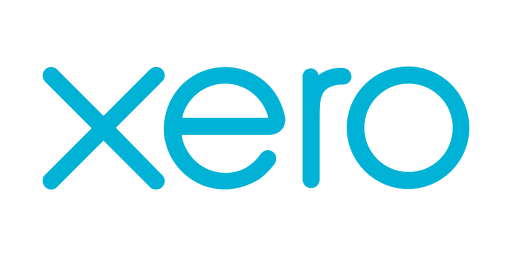
Xero Create a Timesheet Integration
$0.00
Xero Timesheet Automation | Consultants In-A-Box Automate Xero Timesheets to Cut Payroll Workload and Boost Accuracy The ability to create timesheets automatically inside Xero changes how organizations handle payroll, compliance, and team productivity. Instead of manual entry, guesswork, and last-minute corrections, you can ...

Zoho Books Update an Estimate Integration
$0.00
Automate Estimate Updates in Zoho Books | Consultants In-A-Box Automate and Simplify Estimate Updates in Zoho Books Keeping estimates accurate and current is one of those steady, low-glamour tasks that quietly determines how smoothly a business runs. When a scope changes, costs fluctuate, or a salesperson negotiates new term...

Xama Onboarding Delete Report Integration
$0.00
Xama Onboarding Delete Report API | Consultants In-A-Box Keep Onboarding Data Accurate and Compliant: Smarter Report Deletion with Xama Deleting a report in your onboarding system may sound like a small operational task, but it’s one of the most important levers for data quality, privacy compliance, and cost control. Xama’s ...

X (formerly Twitter) Watch Mentions Integration
$0.00
Watch Mentions | Consultants In-A-Box Watch Mentions: Real-Time Brand Intelligence Powered by AI Agents Watching social conversation in real time is no longer optional for organizations that want to protect reputation, respond to customers, and capture market signals. A "Watch Mentions" capability collects live mentions...

Xero Projects Update a Project Details Integration
$0.00
Xero Projects Update Automation | Consultants In-A-Box Keep Project Data Accurate and Actionable: Automating Xero Projects Updates Updating project details in Xero — names, deadlines, budgets, team assignments, and billing methods — is essential to keep work moving and invoices correct. When those updates depend on manual en...
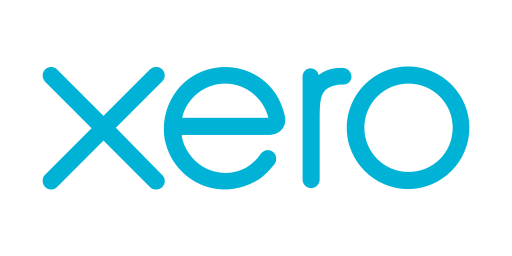
Xero Create a Quote Integration
$0.00
Automated Quote Creation with Xero | Consultants In-A-Box Turn Quotes into Revenue Faster with Automated Xero Quote Creation Creating accurate, timely quotes is the first step in converting interest into revenue. The Xero "Create a Quote" capability lets businesses generate formal offers inside their accounting system automa...

Zoho Books Update a Sales Order Integration
$0.00
Zoho Books Update Sales Order | Consultants In-A-Box Keep Orders Accurate and Agile: Automating Sales Order Updates in Zoho Books Updating a sales order quickly and reliably is a practical, high-impact way to improve order-to-cash performance. Zoho Books supports programmatic updates to sales orders so changes to items, pric...

X (formerly Twitter) Watch Direct Messages Integration
$0.00
Watch Direct Messages | Consultants In-A-Box Real-time Direct Message Monitoring to Speed Support, Reduce Risk, and Unlock Insights The Watch Direct Messages capability lets organizations observe private conversations as they happen and turn those moments into immediate business action. Instead of treating direct messages as...

Xero Projects Make an API Call Integration
$0.00
Xero Projects Automation | Consultants In-A-Box Turn Xero Projects Into Automated Project Tracking and Profitability Insights The Xero Projects "Make an API Call" capability makes your project accounting a living, connected part of your operations. In plain language, it gives other apps and automation systems a reliable way ...

Xama Onboarding Create an Onboarding Report Integration
$0.00
Create an Onboarding Report | Consultants In-A-Box Automated Onboarding Reports: Turning New-Hire Activity into Clear, Actionable Insights Creating a reliable onboarding report can feel like assembling a puzzle from pieces stored across HR systems, learning platforms, IT ticketing tools, and spreadsheets. The "Create an Onbo...

Zoho Books Update a Payment Integration
$0.00
Update a Payment | Consultants In-A-Box Keep Financial Records Accurate and Agile with Automated Payment Updates The ability to correct, reclassify, or enrich payment records quickly is a small administrative detail with outsized business impact. The "Update a Payment" function in accounting platforms like Zoho Books gives o...
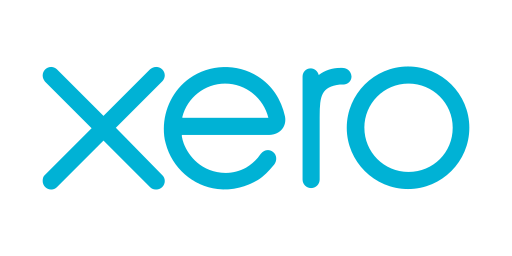
Xero Create a Purchase Order Integration
$0.00
Xero Create Purchase Order | Consultants In-A-Box Automate Procurement and Cut Errors with Xero Purchase Order Automation The Xero Create a Purchase Order capability lets businesses create supplier orders directly from their internal systems and workflows, without manual entry into accounting software. When integrated into p...

X (formerly Twitter) Search Posts Integration
$0.00
X API Search Posts | Consultants In-A-Box Turn Social Conversations into Actionable Business Intelligence with the X API Search Posts Accessing public social conversations is one thing; turning them into decisions and work that actually happens is another. The X API Search Posts capability lets organizations specify the sign...

Xero Projects List Time Entries Integration
$0.00
Xero Projects Time Entries Automation | Consultants In-A-Box Turn Time Entries into Clear Billing, Better Forecasts, and Faster Decisions The Xero Projects "List Time Entries" capability gives teams a single, dependable view of every minute logged against projects and tasks. Instead of hunting through spreadsheets or chasing...

Xama Onboarding Create an AML Report Integration
$0.00
Create an AML Report API | Consultants In-A-Box Automate AML Reporting to Reduce Risk, Save Time, and Improve Decision-Making The Create an AML Report capability turns the slow, manual work of compiling anti-money laundering reports into a reliable, repeatable service. Instead of treating report creation as an ad-hoc, paper-...

Zoho Books Update a Credit Note Integration
$0.00
Automating Credit Note Updates | Consultants In-A-Box Turn Credit Note Corrections into Fast, Accurate Financial Records with AI Updating credit notes is a small but critical accounting task that often becomes a disproportionate drain on time and accuracy. Whether an item was returned, tax needs correcting, or a discount was...
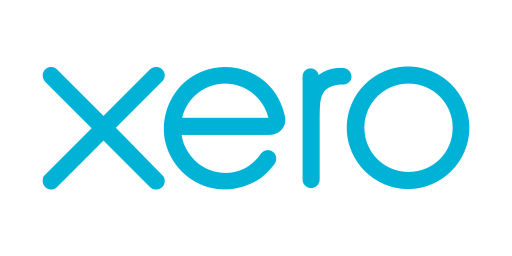
Xero Create a Payment Integration
$0.00
Create Payments Automation | Consultants In-A-Box Automate Payments in Xero to Cut Errors, Speed Reconciliation, and Improve Cash Flow Automatically creating and recording payments inside your accounting system changes how finance teams work. When payments are posted and reconciled in real time, ledgers stay accurate, report...

Xero Projects List Projects Integration
$0.00
Xero Projects — List Projects | Consultants In-A-Box Turn Project Data into Action: How the Xero Projects “List Projects” Capability Drives Business Efficiency The Xero Projects "List Projects" capability provides a single, reliable roster of every project your organization is managing — active, paused, and completed. In pla...
X (formerly Twitter) Retrieves the details of a user by their ID or username. Integration
Integration

X (formerly Twitter) Retrieves the details of a user by their ID or username. Integration
$0.00
User Details Retrieval | Consultants In-A-Box Turn User Profiles into Business Impact: Automating User Details Retrieval Accessing a user’s profile — their name, role, preferences, activity signals, and public handles — is a small technical capability with outsized strategic value. When teams can reliably fetch that informat...

Xama Onboarding Create a Hub Contact Integration
$0.00
Create Hub Contact | Consultants In-A-Box Automate CRM Onboarding: Create Hub Contacts with AI-Driven Workflows Creating and maintaining a clean, up-to-date contact hub is one of those essential but repetitive tasks that quietly drains time and introduces risk. The Create Hub Contact capability turns that repetitive work int...
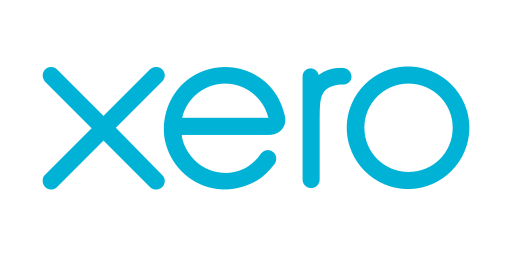
Xero Create a Manual Journal Integration
$0.00
Create Manual Journal (Xero) | Consultants In-A-Box Automate Financial Adjustments with Xero’s Manual Journal API Creating accurate, timely journal entries is routine but essential for healthy finance operations. Xero’s capability to create manual journals from connected systems moves that repetitive work out of spreads...

Zoho Books Update a Contact Person Integration
$0.00
Zoho Books Contact Updates | Consultants In-A-Box Keep Contacts Accurate and Teams Aligned with Automated Zoho Books Contact Person Updates Contact details are small data points that drive big outcomes. When the wrong person receives an invoice, when phone numbers bounce, or when a customer’s relationship owner changes and s...

Xero Projects List Project Users Integration
$0.00
List Project Users — Xero Projects | Consultants In-A-Box Turn Project Rosters into Business Impact: Automate Resource, Billing, and Collaboration with Project User Lists The ability to see who is on a project might sound mundane, but it is a cornerstone for better resource planning, clearer accountability, and streamlined b...

Xama Onboarding Create a Hub Client Integration
$0.00
Create a Hub Client | Consultants In-A-Box Automate Client Onboarding to Scale Faster, Reduce Errors, and Improve Business Efficiency The "Create a Hub Client" capability automates the process of adding new customers into a service hub so your teams don't have to manually create accounts, assign permissions, or stitch data a...

X (formerly Twitter) List User Posts Integration
$0.00
List User Posts | Consultants In-A-Box Turn a User's Public Posts into Actionable Insights with AI-Powered Automation The "List User Posts" capability gives businesses structured access to the stream of public posts from a specific user so you can monitor trends, detect signals, and turn social conversations into decisions. ...

Xero Projects Get a Time Entry Integration
$0.00
Xero Projects — Get a Time Entry | Consultants In-A-Box Turn time logs into accurate invoices and actionable insights with Xero Projects' Get a Time Entry Get a Time Entry in Xero Projects gives you a single, authoritative record of a specific work session — who did the work, when it happened, how long it took, what notes we...
Collections
- 0CodeKit Integrations
- Accounting
- ACH Processing
- Active Campaign
- Ai Automations and Integrations
- Aircall
- All Integrations
- Annuities
- ATS
- Auto & Home
- BI and Analytics
- Brand Management
- Bullhorn Integration Endpoints
- Business Infrastructure
- Business Operations
- Business Retirement Plans
- Business Systems
- Card Access
- CCaaS
- Clio Integrations
- Cloud Services
- Connectivity, MPLS, Private Line
- Cost Reduction
- CPaaS/SIP
- Customer Relationship Management
- Data Center
- Developer Platforms
- Development
- E-Commerce
- E-Commerce Software
- eREIT
- Field Service Automations and Integrations
- Finance Automations and Integrations
- Financial
- Fire Alarm Systems
- Fleet Tracking
- FTP Hosting
- Gift Card & Loyalty
- Google Sheets
- Graphic Design
- Health
- Healthcare Software
- HR and HCM Automations and Integrations
- HR Software
- Human Resources
- Implemenation
- Insurance
- Integrate RingCentral With Monday.com
- Integrations
- International
- Intrusion Systems
- Investments
- Invoicing
- Invoicing and Contract Software
- Lead Generation
- Learning Management
- Legal
- Legal Services
- Long Term Care
- Managed Investments
- Managed Services
- Marketing
- Marketing
- Marketing Automations and Integrations
- Micro Funding
- Mobile Payments
- Mobility/IoT
- Monday.com Integrations
- Mutual Funds
- Other
- Others Software
- Outsourced Sales
- Pay Per Click
- Payment Processing
- Payroll
- Phone Systems
- Photography
- Pre-Paid Legal
- Print & Promotional
- Process Implementation
- Product Management
- Productivity
- Productivity & Efficiency Improvement
- Project Management
- Recuritment
- Recurring Payments
- RingCentral Integrations
- Sales Software
- Sales Training
- SD-WAN
- Search Engine Optimization
- Security
- Security and IT Management
- Security Systems
- Sling Scheduling Features
- SMS Communication
- Social Media
- Social Media Management
- Telecommunications Automations and Integrations
- Term Life
- Top Products
- Twilio Integrations
- UCaaS
- Video Conferencing
- Video Production
- Video Surveillance
- Web Development
- Web Hosting
- Webinar & Screen Sharing
- Workflow Training
- Zoho
- Zoho CRM Integrations
- Zoho Email & Collaboration
- Zoho Finance
- Zoho HR
- Zoho Legal
- Zoho Marketing
- Zoho Sales
- Zoho Service
- Zoho Suites
Brands
-
Liquid error (snippets/sidebar-collection line 199): internal



























